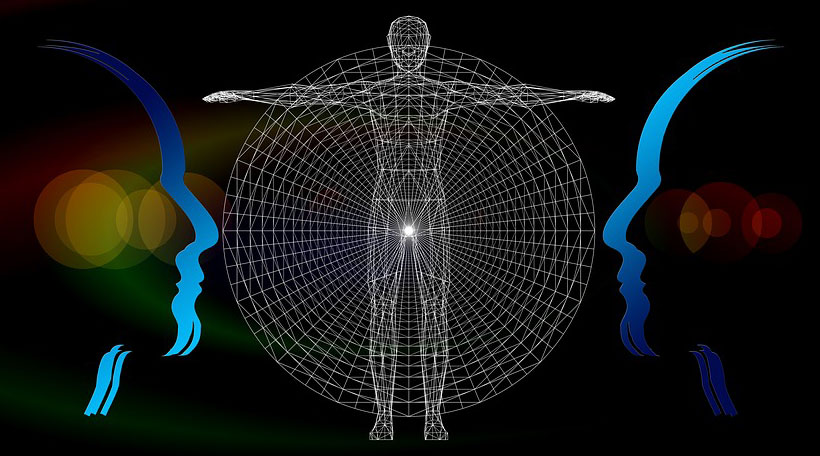- Like
- SHARE
- Digg
- Del
- Tumblr
- VKontakte
- Flattr
- Buffer
- Love This
- Save
- Odnoklassniki
- Meneame
- Blogger
- Amazon
- Yahoo Mail
- Gmail
- AOL
- Newsvine
- HackerNews
- Evernote
- MySpace
- Mail.ru
- Viadeo
- Line
- Comments
- Yummly
- SMS
- Viber
- Telegram
- JOIN
- Skype
- Facebook Messenger
- Kakao
- LiveJournal
- Yammer
- Edgar
- Fintel
- Mix
- Instapaper
- Copy Link
 Your equilibrium allows the body and mind to stay in balance. Yoga works to maintain a balance in both spaces of yourself. When you’re sound in your mind, you’re more capable of maintaining equilibrium within your body. You can do the balancing poses far more easily. It’s important to maintain contact with your mind and body. You will know if you’re not because you’ll suffer from unclear thinking and it will be a challenge to do any balancing poses.
Your equilibrium allows the body and mind to stay in balance. Yoga works to maintain a balance in both spaces of yourself. When you’re sound in your mind, you’re more capable of maintaining equilibrium within your body. You can do the balancing poses far more easily. It’s important to maintain contact with your mind and body. You will know if you’re not because you’ll suffer from unclear thinking and it will be a challenge to do any balancing poses.
Yoga helps the energy flow in the right direction again. Specific postures like Crescent Lunge Pose, Forward Bend, and Warrior II/III can help you find the balance in your body again. When you are trying to balance, the brain works hard to achieve this. It can be helpful for getting the brain out of negative or pointless thought processes.
How Yoga Helps Your Balance
 If you are looking to improve your balance, yoga is an excellent way to do this. It helps you focus, create movement in your body, it helps with coordination and it helps with balance. Instead of being still with poses, it’s the movement of poses in yoga that helps with balance. When you get good at transitions and create greater strength, you improve balance.
If you are looking to improve your balance, yoga is an excellent way to do this. It helps you focus, create movement in your body, it helps with coordination and it helps with balance. Instead of being still with poses, it’s the movement of poses in yoga that helps with balance. When you get good at transitions and create greater strength, you improve balance.
Through yoga, you should focus on alignment, strength, and paying attention (focusing on what you’re doing at the moment you’re doing it.) That kind of mindfulness is also going to balance out the mind and all its thoughts. With yoga poses, you’ll need to focus on your alignment. If you’re feeling shaky, making those small adjustments. The body will let you know if you’re in balance or not, you just have to be willing to listen.
Because balance isn’t always that easy, your body will need to build strength to find the balance, hold it for a period of time, and then modify your own alignment. Yoga will teach you how to be more mindful so you can properly pay attention to the body. If you fall out of a balance pose fast and hard, it’s likely our monkey mind had a part to play in it.
You need to have good flexibility in many of the balance poses. While strength helps support your left standing leg in Warrior III, if you’re not flexible, you can’t straighten your leg. If your hips are tight, you can’t pull your leg all the way back and won’t be able to do the pose properly. You can’t really muscle your way into doing balancing poses. You won’t succeed and you may end up hurting yourself. Work on flexibility and work on mastering your own mind. This will get the body in balance
Poses for Improving Balance
Helpful poses include one-legged balancing Asanas. They can do the following:
- Improve your focus.
- Help reduce stress and keep you calmer.
- Helps to strengthen your muscles.
- Helps improve posture.
- Helps you to become better coordinated.
Three Helpful Yoga Poses to Improve Your Equilibrium
#1. Tree Pose
You’ll start off in Mountain pose and then starting slowly shifting your weight onto the left leg. As you do this, you can open your right knee up so that it points to the right wall. You want to rest your heel against your left leg.
Focus on one point in front of you. Slide your right foot on the standing leg. Do this slowly so you can find where you’re able to keep balance. Once you hit point before your balance breaks, stay here. Bring your palms into prayer in front of your heart.
Keep your knee at a 90-degree angle with your heart center open.
You can also bring your arms overhead with palms touching. Hold the pose for up to 10 breaths.
Slowly release and repeat on the other side.
#2. Eagle Pose
Startin Mountain poses or to be more prepared posture wise, start in Chair pose.
Shift your weight onto left foot. Slowly move your right thigh over the left thigh. To go fully into the pose, you would hook your right foot behind your left calf. If this isn’t possible, you can just let the foot sit in front of the calf.
Then you’ll want to cross your left elbow over the right elbow. Bring the back of the palms together of if you’re flexible enough in the shoulders; bring your palms to touch.
If possible, sit back further into the position. Hold the pose for up to 10 breaths.
Slowly release your arms and then bring your right leg back over and to the ground.
Repeat on the other side.
#3. Side Plank Pose
You’ll want to start in Downward Facing Dog. Shift so that you’re on the outside edge of your left foot. Put the right foot on top of the left foot. Bring your right hand onto your hip and bring the torso with you. Your left hand should be in front of the shoulder a little bit. To support your weight, you want to focus putting it on the outer part of the left food and hand.
Straighten your left arm and press your index finger into the floor.
Tighten your legs up so they are supporting you better and align the body as one diagonal line from heels to head.
Remain in this position for up to 30 seconds and try to stabilize your body so it’s in complete balance.
The Bottom Line
Through these tips and balance poses, you will find that your mind also becomes more centered. Then you have the value of the body/mind connection. You will have greater prana (life force) throughout.
About Shannon Clark
Shannon holds a degree in Exercise Science and is a certified personal trainer and fitness writer with over 10 years of industry experience.

